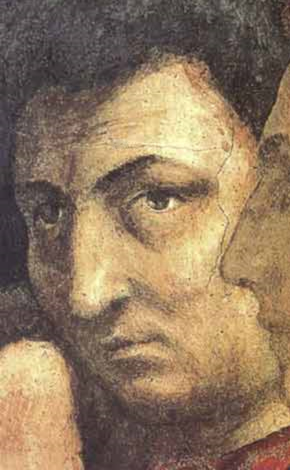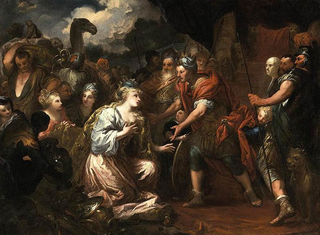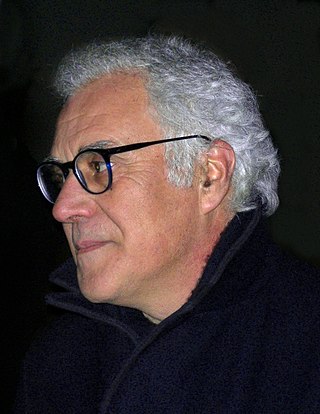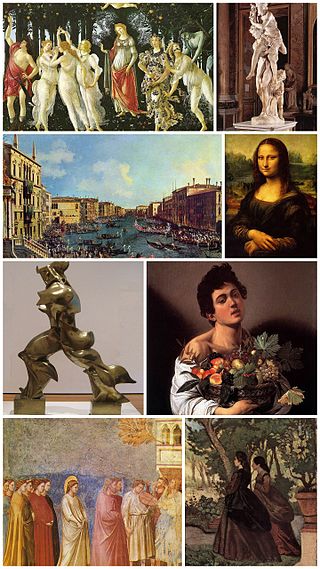Sandro Luporini (born 12 July 1930) is a painter, lyricist and Italian writer. He is also a member of the Metacosa Movement. [1] [2] [3]
Sandro Luporini (born 12 July 1930) is a painter, lyricist and Italian writer. He is also a member of the Metacosa Movement. [1] [2] [3]
As an athlete he played in the Sailing Viareggio, together with his brother Francesco Luporini, before the Serie A and then the national basketball team.
Luporini was born in Viareggio, Italy. In 1953 he studied engineering at the University of Pisa leaving studies to paint and move to Rome. In 1956 he was in Milan and participated in several exhibitions together with the painters of the Bergamini Gallery, taking part in the events of existential realism. She lives in the same neighborhood as a young songwriter: Giorgio Gaber. Between the two, after the casual acquaintance in the bar they both attended, a friendship began soon in artistic collaboration: the two write together the lyrics of the plays and the theatrical performances while Gaber interprets.
The first collaboration between the two is, however, for a song played in 1961 by Maria Monti, Sono the ninth, which the singer presents on the record as "written by a friend of mine, describing Milan just as he would represent a painter"; In the back cover the author's surname is incorrectly reported as Luparini.
His pictorial activity continues: Luporini exposes paintings in the most important national shows, obtaining awards and prizes. In 2005 the City of Pisa, in collaboration with Adac di Modena, presided over by Adriano Primo Baldi, dedicates a personal exhibition to the Teatro Verdi. On this occasion is published in addition to the catalog of the paintings "Sandro Luporini - Metaphysics of the newspaper" with texts by Giuseppe Cordoni, Marilena Pasquali, Eugenio Riccomini, also the volume "Images, words and notes in the work of Sandro Luporini", a collection Of materials and texts on the theater of Giorgio Gaber and Sandro Luporini, curated by Micaela Bonavia. Sandro Luporini, together with Giuseppe Bartolini, Giuseppe Biagi, Gianfranco Ferroni, Bernardino Luino, Lino MannocciAnd Giorgio Tonelli belongs to the artistic movement of the Metacosa Movement. The first exhibition was held in 1979 in Brescia, with the presentation of the critic Roberto Tassi.
So Luporini described the encounter with Gaber:
"It was a very casual thing, in the sense that we lived near Milan. We were on the same bar. They presented me by saying that he was the singer, I was the painter. So I went to see his performances and he came to see my paintings. We became friends. I remember finding a kid who was nineteen, thin like a nail, and I went to listen to him. He played the rock in English, I did not understand anything, but I was bewildered by the energy he was wearing. We have become very friends, then we have often visited. At some point, attending our study (I had a studio with other painters friends), we spent the days talking. One day he said to me, "But why do not we try to write something together?". And so we started the first attempts that remained in the drawer, because they were a bit extravagant and not so commercial. He then still performed through normal channels, television to understand. So at the beginning it was just a game, just a game. This is the first impact. [4]

Masaccio, born Tommaso di Ser Giovanni di Simone, was a Florentine artist who is regarded as the first great Italian painter of the Quattrocento period of the Italian Renaissance. According to Vasari, Masaccio was the best painter of his generation because of his skill at imitating nature, recreating lifelike figures and movements as well as a convincing sense of three-dimensionality. He employed nudes and foreshortenings in his figures. This had seldom been done before him.

Pisanello, born Antonio di Puccio Pisano or Antonio di Puccio da Cereto, also erroneously called Vittore Pisano by Giorgio Vasari, was one of the most distinguished painters of the early Italian Renaissance and Quattrocento. He was acclaimed by poets such as Guarino da Verona and praised by humanists of his time, who compared him to such illustrious names as Cimabue, Phidias and Praxiteles.

Giorgio Gaber, by name of Giorgio Gaberscik, was an Italian singer, composer, actor, and playwright. He was also an accomplished guitar player and author of one of the first rock songs in Italian. With Sandro Luporini, he pioneered the musical genre known as teatro canzone.

The Cimitero Monumentale is one of the two largest cemeteries in Milan, Italy, the other one being the Cimitero Maggiore. It is noted for the abundance of artistic tombs and monuments.

Viareggio is a city and comune in northern Tuscany, Italy, on the coast of the Tyrrhenian Sea. With a population of over 62,000, it is the second largest city in the province of Lucca, after Lucca.

The Macchiaioli were a group of Italian painters active in Tuscany in the second half of the nineteenth century. They strayed from antiquated conventions taught by the Italian art academies, and did much of their painting outdoors in order to capture natural light, shade, and colour. This practice relates the Macchiaioli to the French Impressionists who came to prominence a few years later, although the Macchiaioli pursued somewhat different purposes. The most notable artists of this movement were Giuseppe Abbati, Cristiano Banti, Odoardo Borrani, Vincenzo Cabianca, Adriano Cecioni, Vito D'Ancona, Serafino De Tivoli, Giovanni Fattori, Raffaello Sernesi, Silvestro Lega, and Telemaco Signorini.

Pietro Dandini was an Italian painter of the Baroque period, active mainly in Florence.

Mimmo Paladino is an Italian sculptor, painter and printmaker. He is a leading name in the Transvanguardia artistic movement and one of the many European artists to revive Expressionism in the 1980s.

Vincenzo "Enzo" Jannacci ; 3 June 1935 – 29 March 2013) was an Italian singer-songwriter, pianist, actor and comedian. He is regarded as one of the most important artists in the post-war Italian music scene.

Novecento Italiano was an Italian artistic movement founded in Milan in 1922 to create an art based on the rhetoric of the fascism of Mussolini.

Italian Contemporary art refers to painting and sculpture in Italy from the early 20th century onwards.
Emanuele Cavalli (1904–1981) was an Italian painter belonging to the modern movement of the Scuola Romana. He was also a renowned photographer, who experimented with new techniques since the 1930s.
Giorgio De Vincenzi (1884–1965), was an Italian painter and etcher. He was a versatile artist, using diverse techniques and specialised in landscapes and portraiture.
Lino Mannocci was an Italian painter, printmaker and writer.
Ernesto Treccani was a visual artist, writer and political activist.
Giuseppe De Luigi was an Italian artist.

Bernardino Luino is an Italian painter and etcher. He is one of the founders of the group La Metacosa and currently teaches at the Accademia di Belle Arti di Brera in Milan.
Pasquale Verrusio was an Italian painter, sculptor and engraver.
Giuseppe Biagi is an Italian painter and member of the Metacosa Movement.

The Metacosa is an Italian art movement founded in the late 1970s.
{{cite journal}}: Cite journal requires |journal= (help)